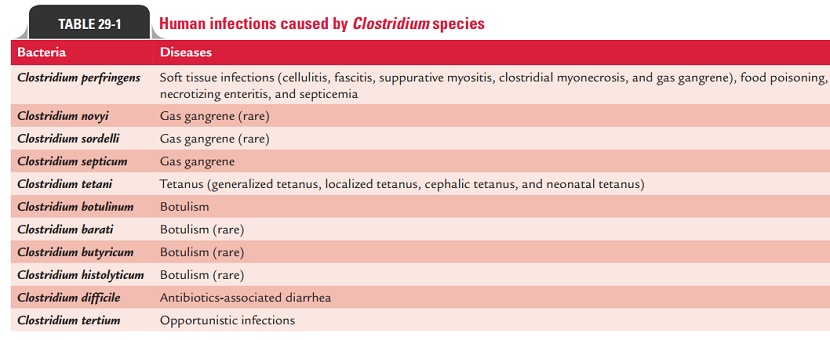Chapter: Microbiology and Immunology: Bacteriology: Clostridium
Clostridium
Clostridium
Introduction
The genus Clostridium consists of Gram-positive, anaerobic bacilli capable of forming endospores. The endospores typically are wider than the bodies of the bacilli, giving the bacteria a swollen appearance resembling a spindle, hence the name Clostridium(kloster, spindle).
Clostridium
Many methods have been followed for classification of clostridia. The traditional method for the classification of Clostridium is based on a combination of different characteris-tics, which include:
1. Optimal growth in anaerobic conditions.
2. Demonstration of spores.
3. Biochemical tests.
4. Gas chromatographic analysis of metabolic products of the bacteria.
As per this classification, more than 130 species have been described in the genus Clostridium. Most species are found as harmless saprophytes in the soil, water, sewage, and decomposed (animal and plant) products. They are also present as part of the normal flora in the gastrointestinal tract of humans and ani-mals. Only few species cause infections in humans (Table 29-1).

Clostridia are more commonly associated with skin and soft tissue infections, antibiotic-associated diarrhea, and food poisoning. Tetanus, gas gangrene, and botulism are three major clinical syndromes caused by Clostridium spe-cies. Pathogenicity of clostridia is attributed to the following features:
1. They produce a number of neurotoxins, enterotoxins, and histolytic toxins.
2. They survive as spores in adverse environmental conditions.
3. They grow well in enriched media in anaerobic conditions.
Related Topics